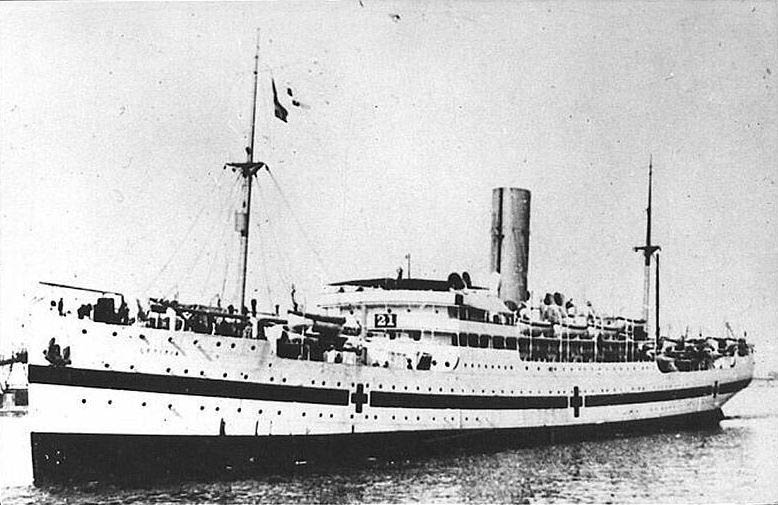1 August 1917 the HMHS Letitia ran aground at Portuguese Cove in Nova Scotia’s Halifax Harbour. The Letitia was a hospital vessel carrying 546 wounded Canadian troops from Liverpool, UK to Halifax, Nova Scotia, Canada.
Portuguese Cove is a small village on the Chebucto Peninsula in the Halifax Regional Municipality. Portuguese fishermen fished the shore along this path in the 18th century, and hence came Portuguese Cove’s name. The 133 passengers from the wreck of HMS Atalante were received by the community during the War of 1812. A local fishing vessel found the passengers in three small vessels stranded in the fog and guided them to safety at Portuguese Cove.
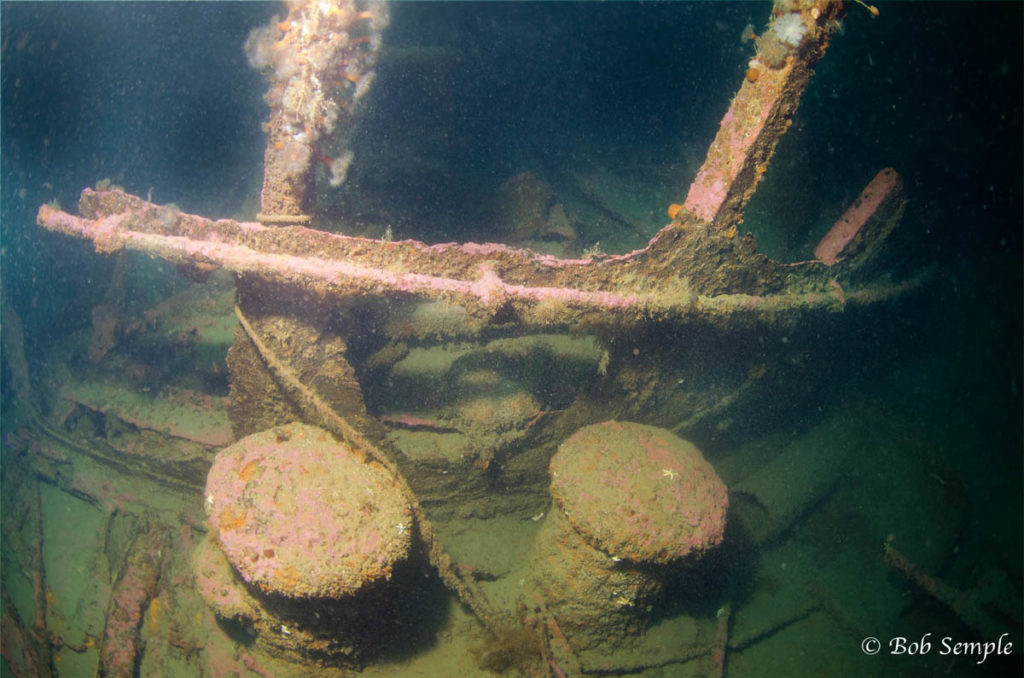
HMHS Letitia was built in 1912 as SS Letitia at Scott’s Shipbuilding & Engineering Co. shipyard in Greenock, Scotland. She launched February 21, 1912. The ship was 143.3 metres (470 ft 2 in.) long, had a 17.3 metre (56 ft 9 in) beam, and had an 8.8 metre (28 ft 10 in) depth. The vessel could attain a maximum speed of 14 knots. The SS Letitia made her maiden voyage from Glasgow to Quebec and Montreal, and continued to sail on that route until the First World War broke out. Letitia could accommodate 1,387 passengers and crew, and sometimes carried mail cargo as well.
When World War I broke out, Letitia was commissioned by the British Admiralty for service as a Hospital Ship or Ambulance Transport and placed under Royal Canadian Naval Medical Services on 14 November 1914. She served in the Mediterranean and did her first sea rescue in 1917 when she came across the sinking of SS City of Birmingham some 90 nautical miles (170 km) southeast of Malta. The freight liner was torpedoed by the German Submarine SM U-32 and eventually sunk with the loss of four lives. All the rest of the survivors were picked up by HMHS Letitia.
She had a full complement of medical and nursing staff with access to all of the equipment available in a state-of-the-art hospital. All hospital ships were distinctively painted in white with a green stripe down the side and three red crosses on each side as well, this was done to differentiate these “non-combatant” vessels from other shipping vessels. But even those non-combatants often became targets for enemy submarines. Letitia received the prefix HMHS for her current service as a hospital ship, which stands for His Majesty ‘s Hospital Ship.
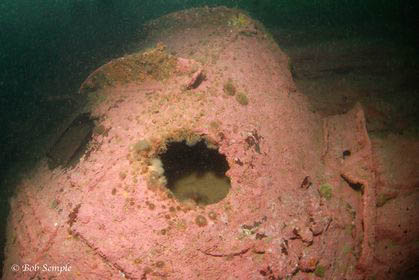
In 1917, the Letitia transferred from the Mediterranean to the Atlantic and her new mission consisted of returning home injured soldiers serving in the United Kingdom back home to Canada. The hospital ship had made a total of five journeys from Liverpool, UK to Halifax , Nova Scotia, Canada, taking home a total of 2,600 injured Canadian soldiers.
With a full crew of 137 men, 74 medical personnel (including 12 nurses) and 546 injured Canadian soldiers on board, HMHS Letitia sailed from Liverpool in July 1917 on her last voyage. The Lettitia had been in service as a hospital vessel for almost three years at this point in time.
The crossing of the Atlantic was uneventful until the morning of 1 August 1917 when fog appeared off Nova Scotia ‘s coast. The visibility was reduced to near zero, but Captain William McNeil continued his route and posted some crew members to listen to the different whistles, such as boy bells or foghorn blasts, warning ships about the dangerous shoals that threaten the entrance to Halifax Harbour.
Upon approaching the Halifax Harbor, Captain McNeil used the dead reckoning navigation method (the process of measuring one’s current position using a previously established location) to estimate his location when he heard a whistle of a pilot boat approaching. The pilot boarded the Letitia and continued the course, but he hadn’t realized that the captain had incorrectly estimated the ship’s position. Ten minutes after the ship was boarded by the pilot, the captain saw a dark object coming closer and ordered the ship astern. This order came too late and Letitia ran aground at Portuguese Cove in Halifax Harbour.
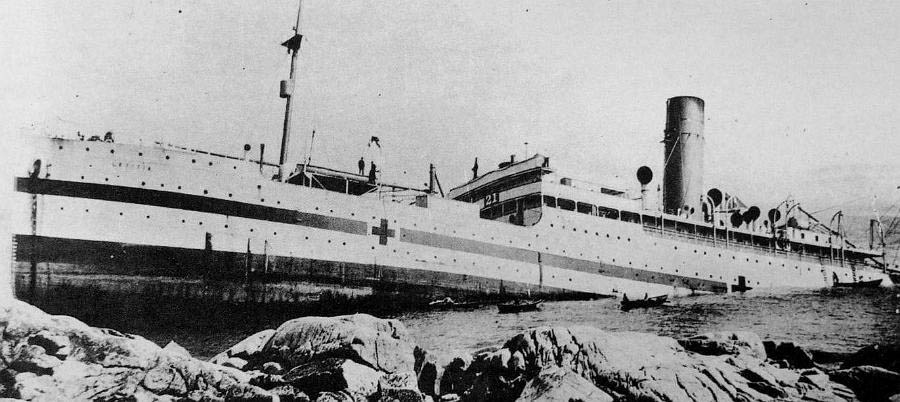
Captain McNeil attempted to reverse the engines to free the ship from its crippled location, but the holds were perforated and the ship was in danger of breaking up, slipping off the shoal and sinking under the waves with all the wounded men still onboard. Immediately after the grounding, the Captain called for assistance to help with the evacuation of all passers. All soldiers were discharged into nearby ships that had rushed in to help. The captain and crew remained on board until the next morning, when the ship started listing and the captain gave the order to abandon ship.
Within months after the grounding, Letitia split in two and her stern sunk into deeper waters. Legal salvagers and looters helped themselves to most of her equipment until the entire ship sank. One life was lost; unfortunately, a stoker was left on the ship and drowned when he tried to swim to shore.
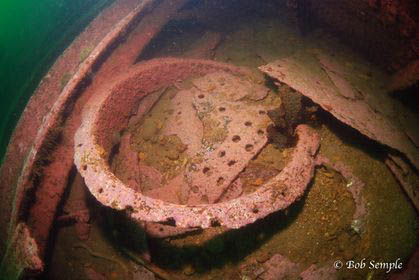
Captain McNeil testified at an inquiry that he had complete confidence in the pilot because he knew where the buoys were, particularly because the pilots were responsible for moving the buoys to protect the harbour during the war. The pilot was found guilty of gross misjudgement mistake and demoted.
The Letitia wreck still lies at a depth of 37 metres (121 ft 5 in) on the ground of the entrance to Halifax Harbor just south of Portuguese Cove and is a popular advanced dive site. The wreck is scattered over the bottom and is located on a steeply sloping reef, with a sudden drop off. You can see a boiler and a part of the stern when looking down.
Thanks to Bob Semple for his Photo Contribution.



